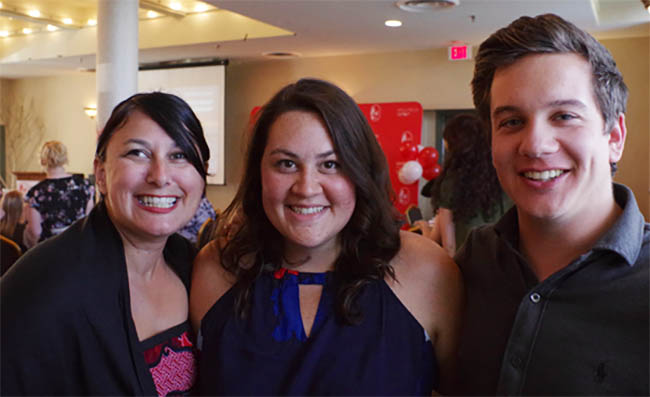Sweat Lodge building a great experience

By Rick Garrick
THUNDER BAY – The construction of a sweat lodge during a three-day visit to Big Grassy River was a hit at Teach for Canada’s Summer Enrichment Program at Lakehead University in Thunder Bay.
“I’ve gone to a sweat lodge before, but this was my first time actually being part of the creation of it,” says Juanita Muise, a teacher originally from Qalipu First Nation in Newfoundland who currently lives in Nipissing. “Starting it from collecting the wood and putting the pegs in the ground, digging the holes, collecting the grandfather rocks, it was quite powerful. It was a great experience.”
Muise was one of 45 teachers who participated along with 18 First Nation communities in the program, which prepares teachers for their upcoming roles in First Nation communities across northern Ontario.
Nolan Wurfel, an Indigenous teacher from Owen Sound, enjoyed working with the Elders during the construction of the sweat lodge.
“They told us exactly what trees we were cutting down, how we were supposed to use the cedar, what the whole tradition means, the grandmother and grandfather stones, what that signifies,” Wurfel says. “So we got a really top-down teaching of why this takes place, why we do sweat lodges and why it is still important to a lot of the communities and why it is important to learn these values and teach students the importance of these things.”
Emily McCartney-Maracle, a teacher from Tyendinaga Mohawk Territory, appreciated the opportunity to learn more about traditional medicines in addition to working on the sweat lodge.
“Having (Big Grassy River principal and education director) Lyn Blackburde teach us all of those traditional medicines and really taking the time to explain protocols and things like that that most of us hadn’t considered — it was just amazing,” McCartney-Maracle says. “The community was so welcoming and so helpful and they were just so full of laughs and smiles. Honestly, it was an amazing experience.”
The program launched in 2015 with 31 teachers and seven participating communities, and now, thanks to about $1.6 million in federal Youth Employment Strategy funding announced by Employment, Workforce Development and Labour minister Patty Hajdu during the program’s commencement ceremony on Aug. 4, it will continue expanding by about 20 more teachers and five more communities per year.
“These are fully qualified teachers — they are graduates of accredited teachers colleges and they are well trained,” Hajdu says, adding that the teachers have made a commitment to work in the communities for a minimum of two years. “So they have that time to develop the relationship with students and the communities can know that they can depend on those teachers and they won’t be leaving mid-year, which has been a problem in some cases.”
Kyle Hill, executive director of Teach for Canada, says the federal funding will help with the recruitment and training of more than 100 teachers between 2017-2020.
“Too often, teachers arrive in remote Indigenous communities without the preparation and support they need to succeed — and stay — in the classroom,” Hill says. “Teach For Canada addresses that gap: we work with northern First Nations communities to recruit, prepare and support outstanding teachers.”
Cynthia Wesley-Esquimaux, chair of Truth and Reconciliation at Lakehead University, director at Teach For Canada and a Chippewas of Georgina Island citizen, says the program is an example of on-going reconciliation.
“Teach For Canada’s work is already having a huge impact in the north, and we are delighted that Employment and Social Development Canada will allow us to expand that impact.”


